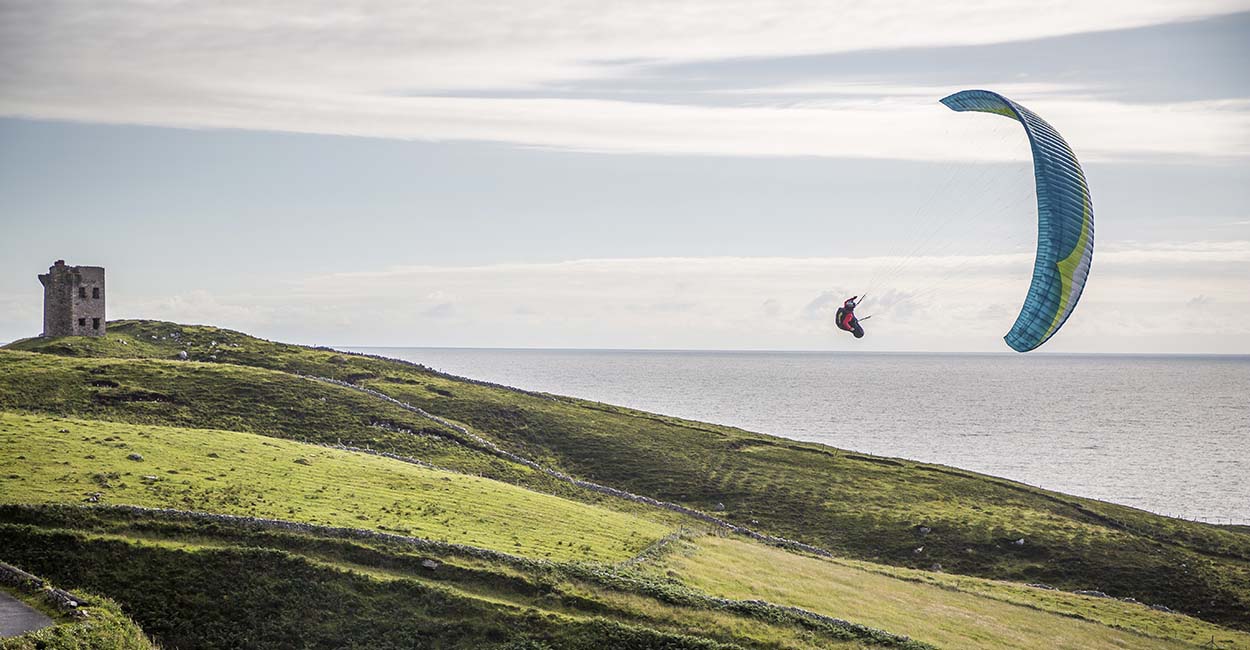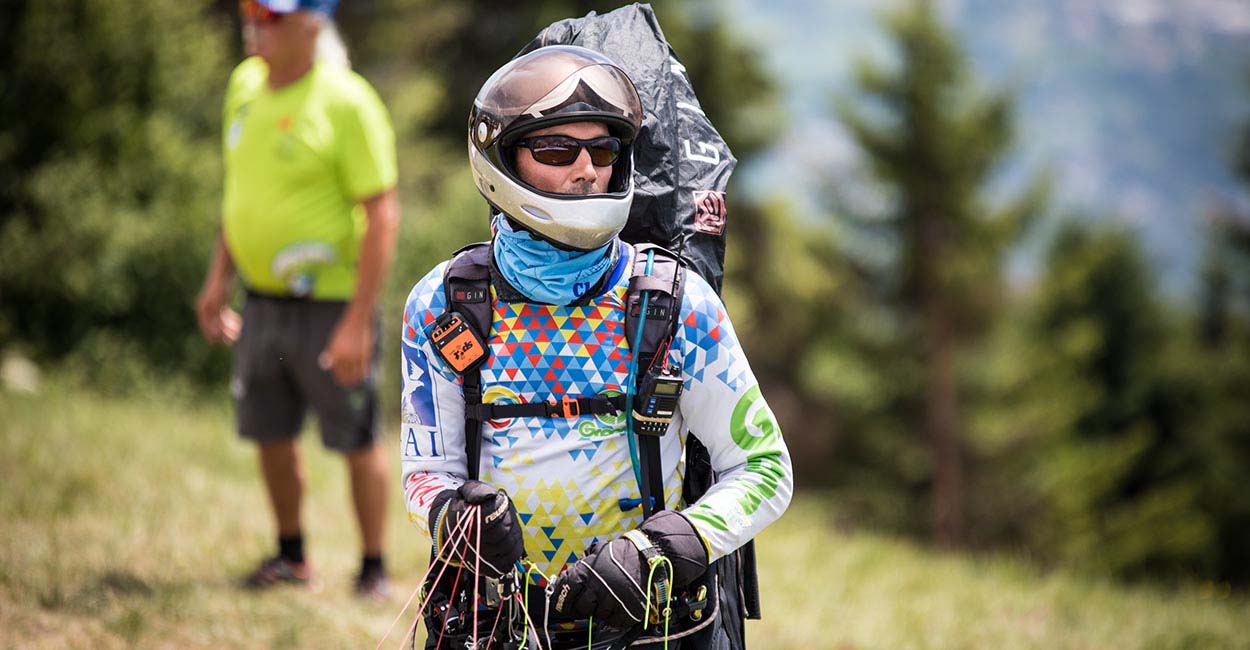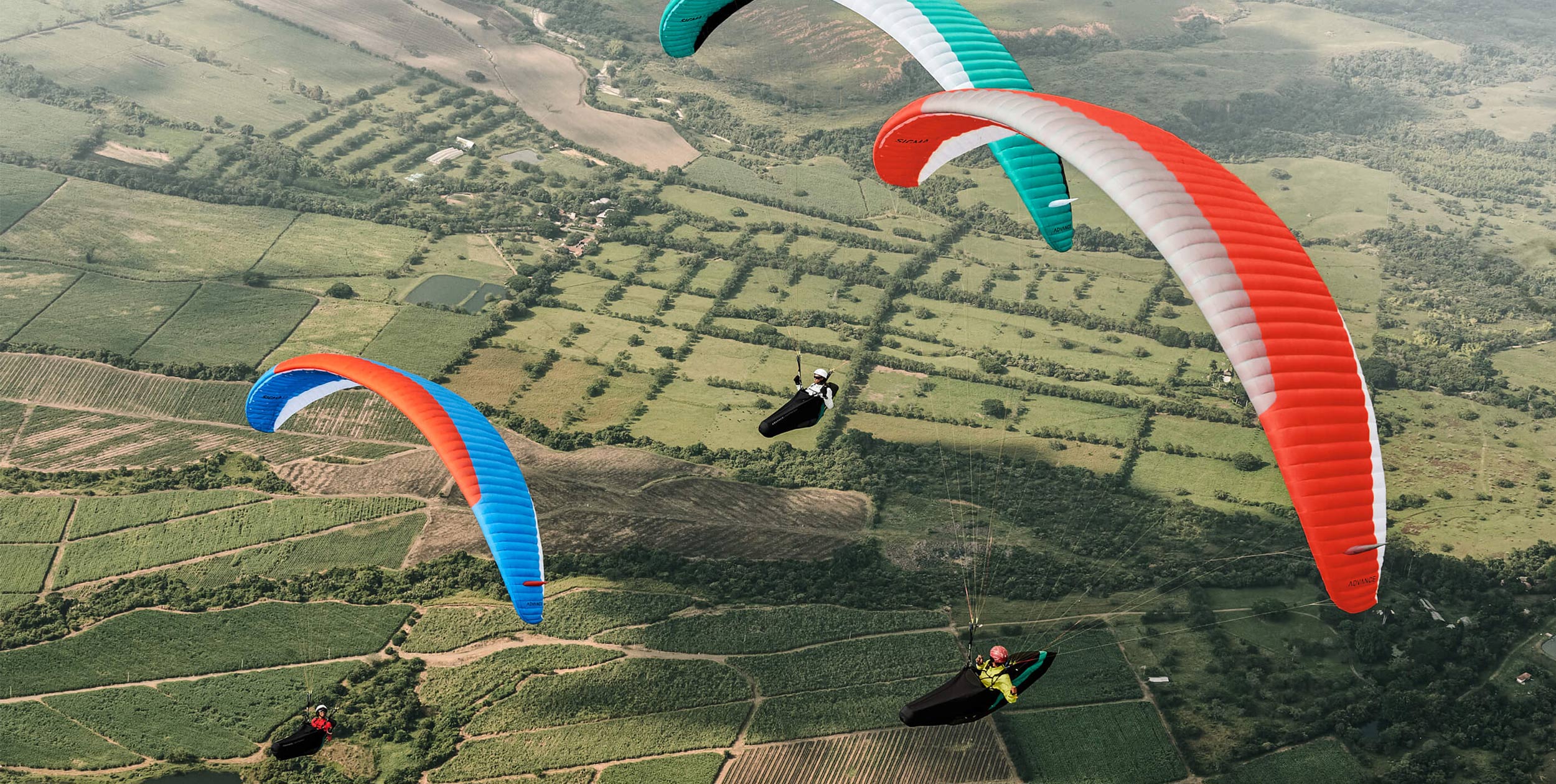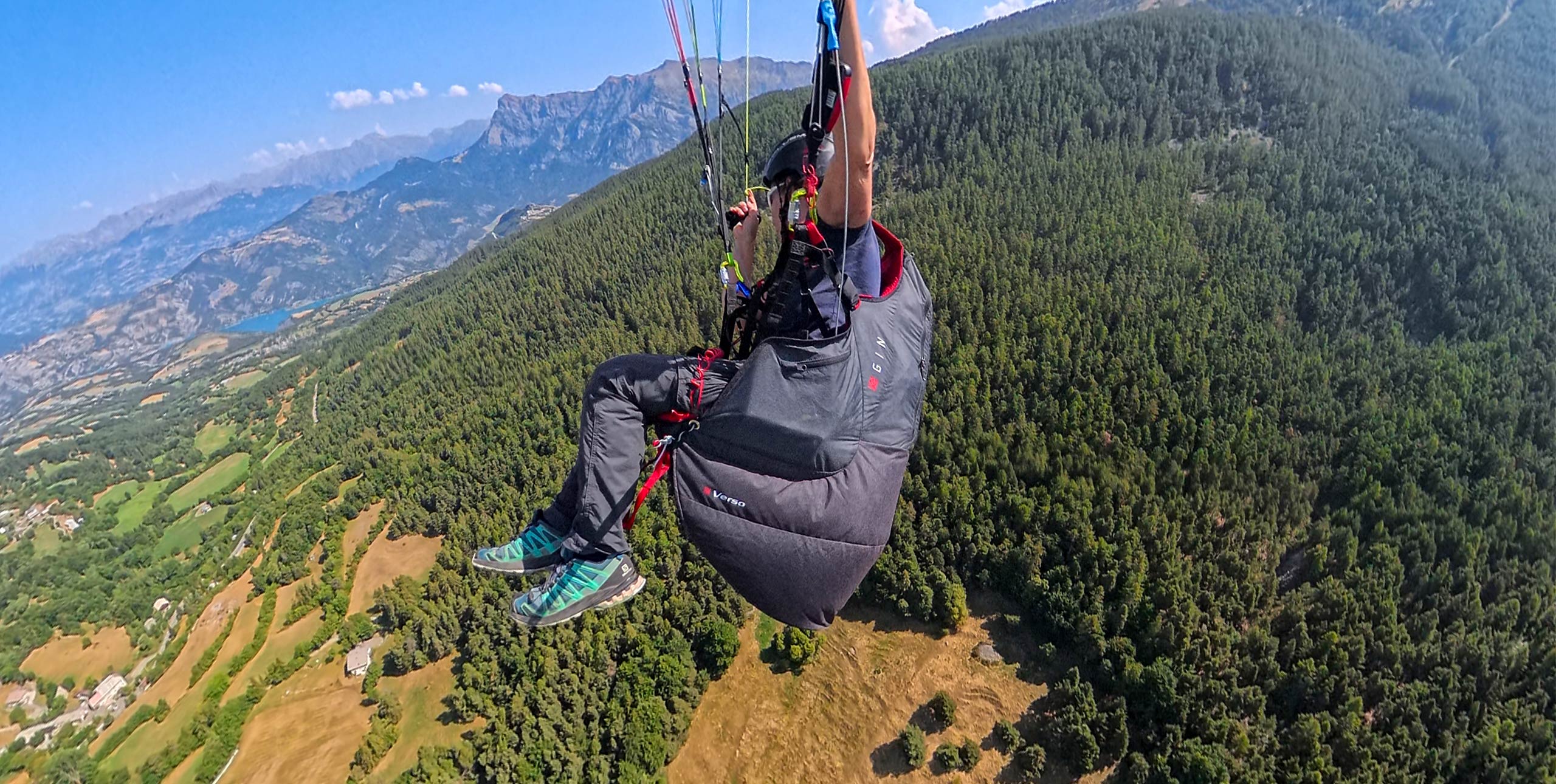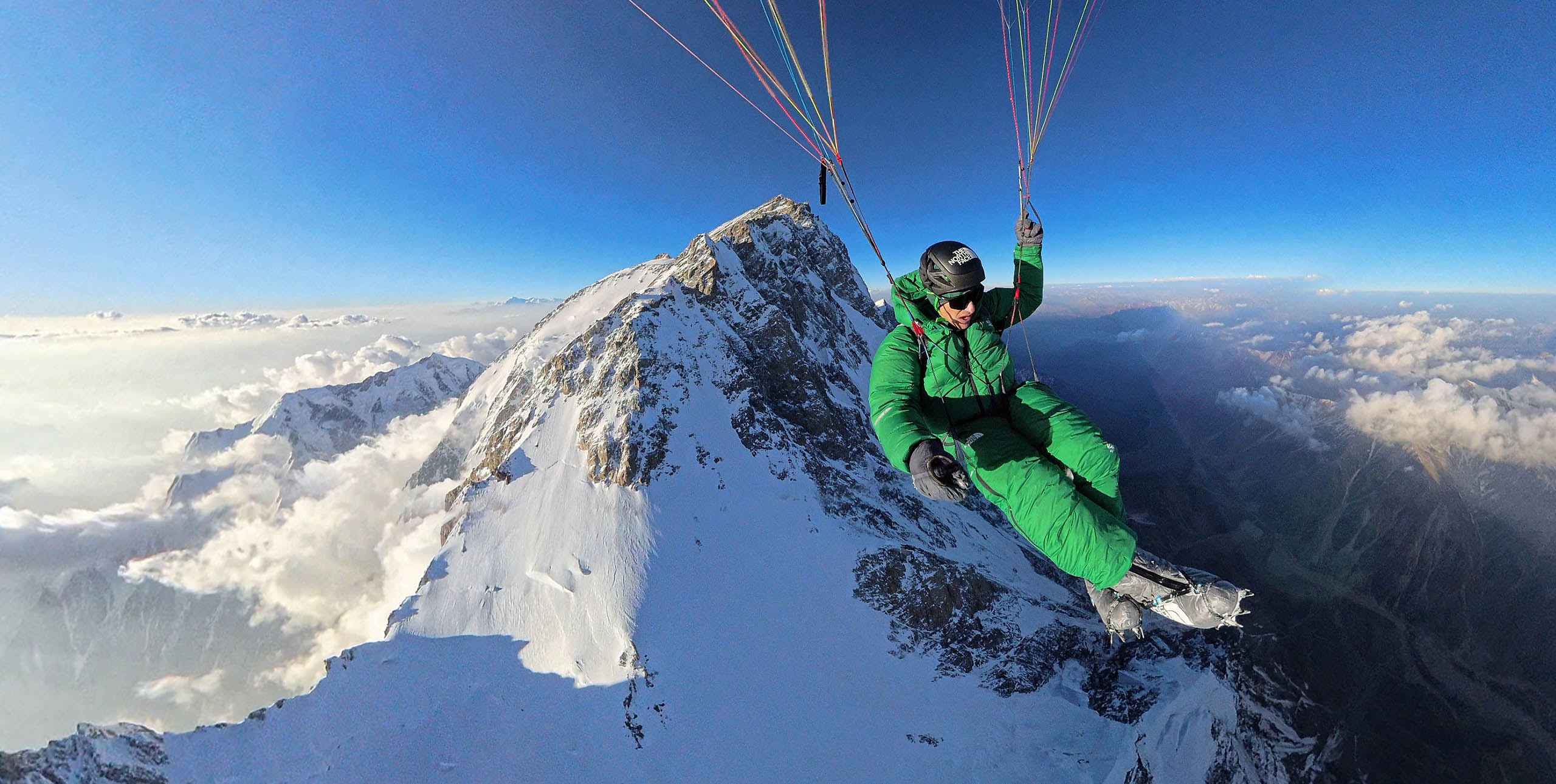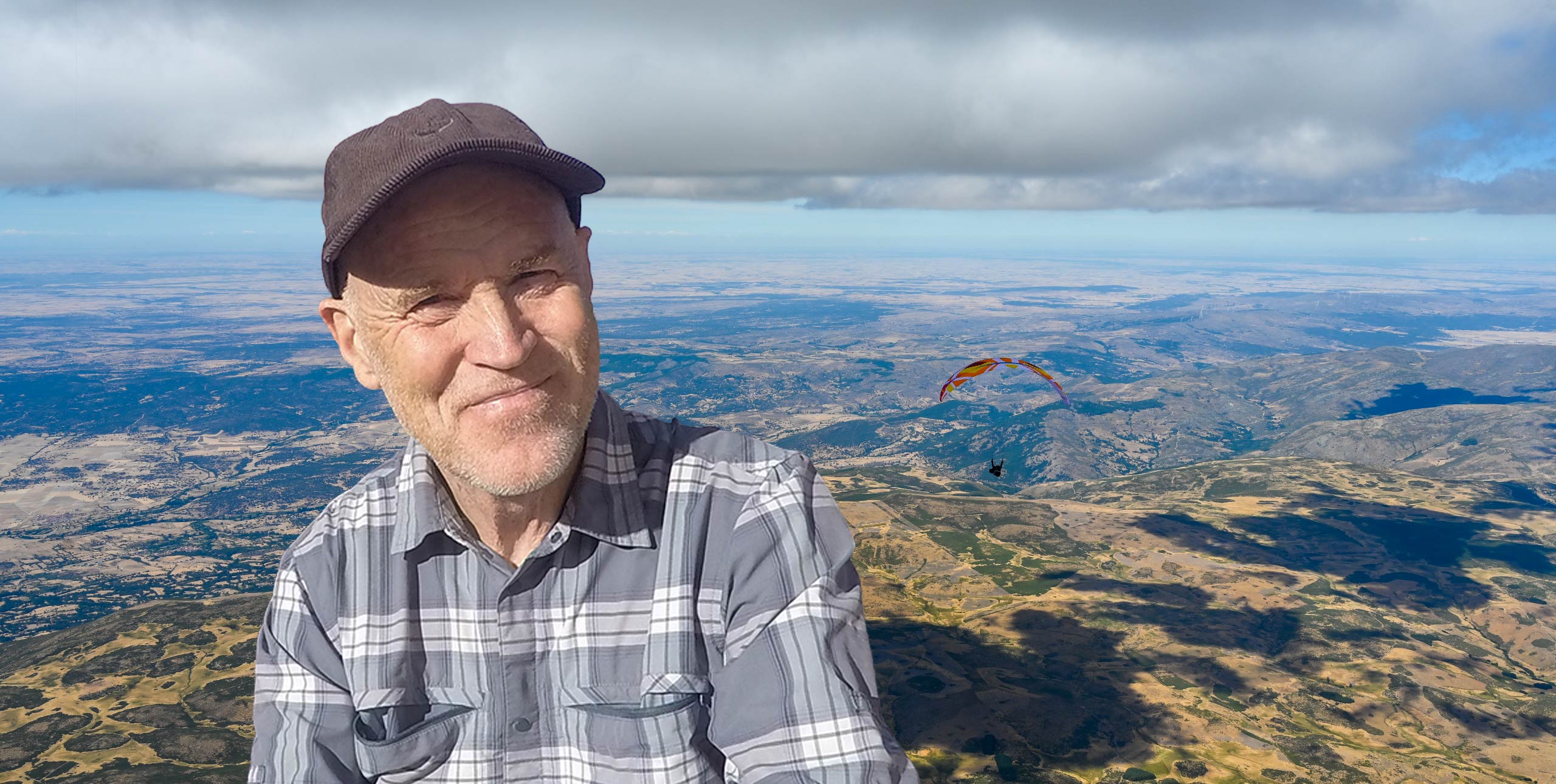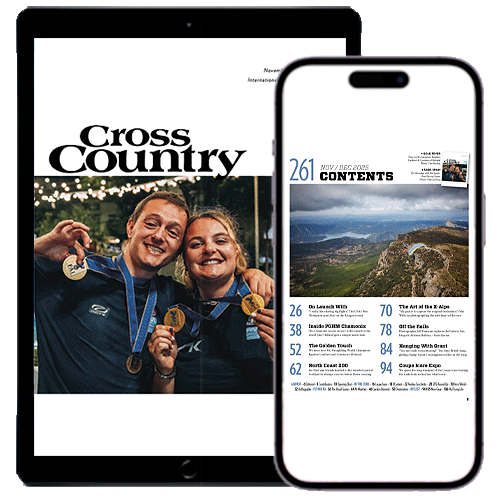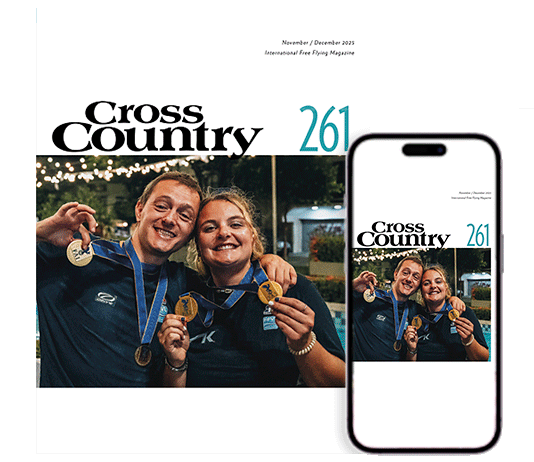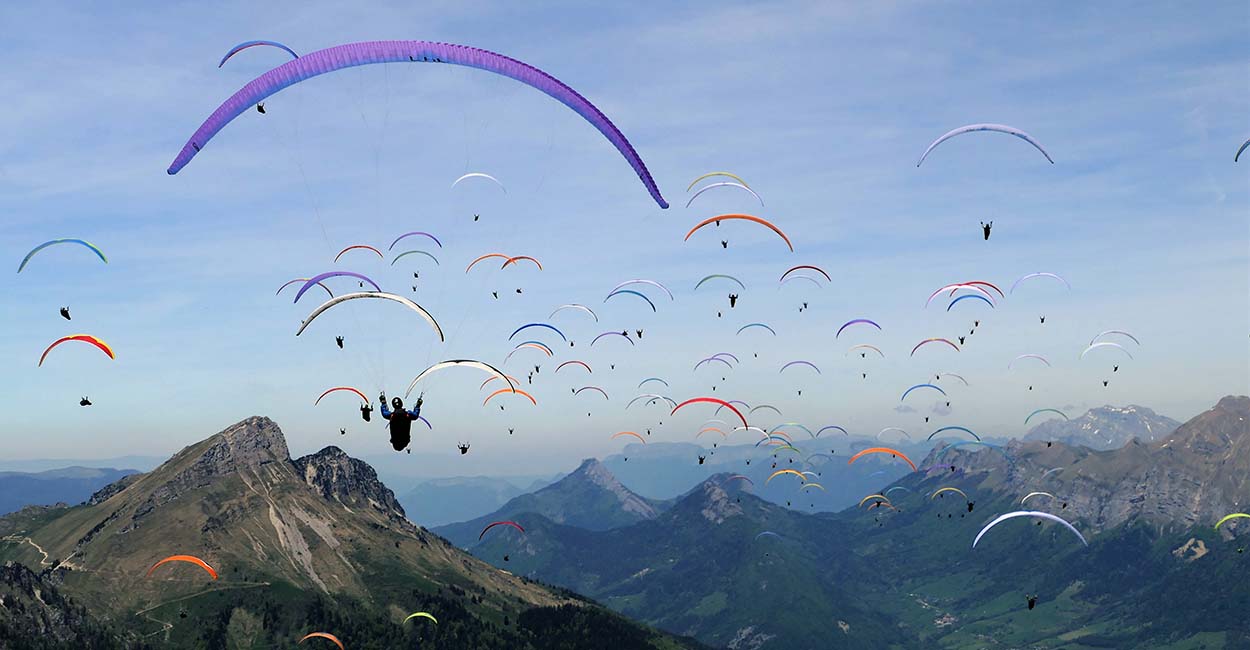
Glider performance and a pod harness will help your glide, but there is more to gliding well than simply choosing streamlined equipment. Paragliding guide and author Kelly Farina explains more.
Have you ever noticed how some pilots just seem to glide better, arriving higher after every transition and seeming almost to bounce as they extract energy from the sky?
Glider performance has something to do with this, in the right hands of course, and the more streamlined pod harness is very helpful. However, the main reason for their success is the lines the pilots choose over the terrain.
A solid EN-B on a good line will beat a D on a bad line every time. The performance difference is tiny in comparison to the potential difference between gliding through rising or sinking air.
Whether you’re just bouncing along a thermic ridge or making an Alpine valley transition, gliding downwind in active air over the flats or just moving to a marked core nearby, a good pilot will more often than not arrive higher and in some cases earlier. Knowing how fast to fly helps greatly here, but only when the line is right.
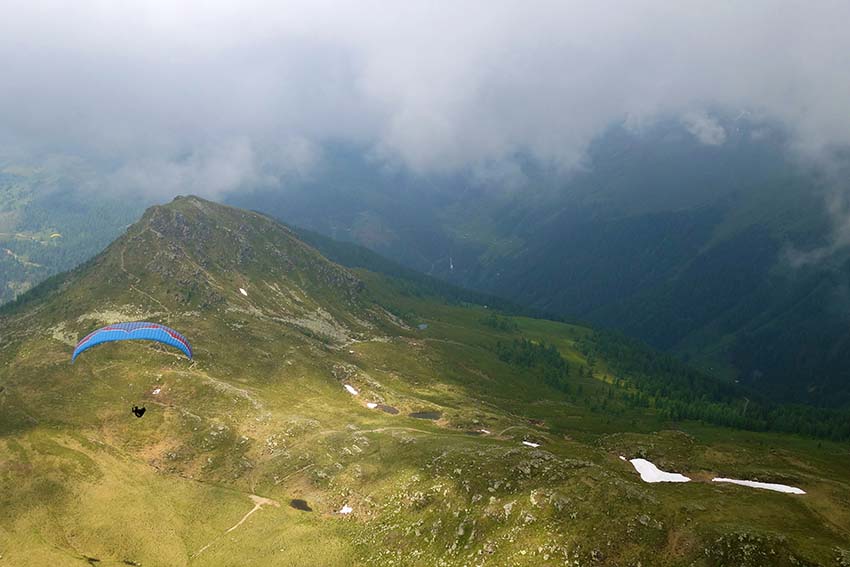
All this is great, and important, but there’s definitely something else going on. It’s not just a pilot’s uncanny ability to choose good line after good line. One thing is very often overlooked: the concept of active gliding. When you add up all the advantages, the outcome can be impressive. And this step up in performance, unlike flying a hotter glider, is 100% free – in terms of both cash and extra risk.
Consider: Pilots A and B are on identical lines, gliders, harnesses and wing loading. Pilot B arrives higher after a 10km valley crossing.
Why?
While he glides in active air, Pilot A is taking photos and sucking on his drinks tube, allowing the air to roll him about in the harness. His wing is also lightly pitching forwards and backwards, inducing many tiny swing-throughs and wingovers. When flying alone he won’t really notice these little inefficiencies. But if he’s flying in company – skilful company – the difference can be seen and no longer ignored.
It can mean the difference between the pilot missing his next climb, or finding enough breathing space to play another move.
This becomes crucial when arriving low. Throwing metres away when thermalling or gliding can only hurt our efficiency. So even when we’re gliding, we pilots should act as the spring which dampens out roll, pitch and yaw, just as we do when we’re thermalling.
Controlling the pitch is important on glides; it’s a very similar technique to the way we enter thermals. It’s important to keep the speed of the pilot through the air as constant as possible. This can be done solely with brake, or with rear-riser input. The latter is the preferred method when flying the wing faster at lower angles of attack. Brakes at this point will induce some pretty unwieldy behaviour.
When a glider is pulled into turbulence and the brakes are used correctly to arrest the surge, an interesting thing happens. Height is gained from the system. But this will only happen if the wing is not choked of its airspeed and forced to dive to regain it. This helps immensely on glides.
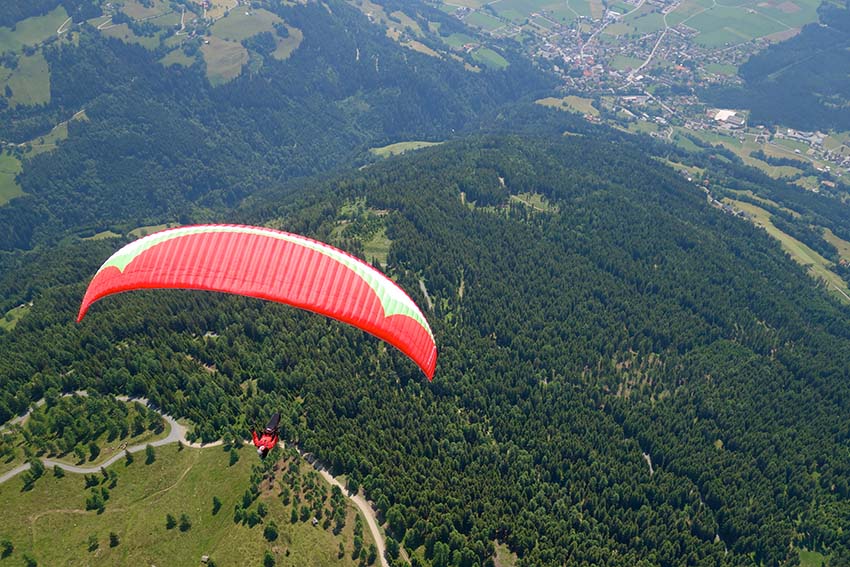
Controlling the roll is as simple as choosing which configuration you’d like your karabiners in. The answer is “level”. Remaining “loose to listen and firm to react” in the harness will enable the sensitive pilot to roll towards the side that’s lifting, halting it.
Before it drops down under the extra weight, the pilot should roll off, and so on. All the while he or she is controlling yaw and pitch (yaw is simply asymmetrical pitch, and may require some roll authority too).
The earlier a pilot reacts with these small adjustments, the less reaction is required. Anticipation has nothing to do with it; this is basic balance and sense of motion. The more a pilot practises, the more intuitive it will become.
Also important is the ability to maintain a true course, with no meandering. A straight line is the best way from A to B, unless you’re searching for something.
Gliding well is a little like multi-tasking, and this is why it’s essential to have good glide techniques in our pilot toolkit.
Finally, it’s worth bearing in mind that if we can’t climb efficiently, or we’re on a badly chosen route, these high-end concepts about glide are of very little use.
This is an extract from Mastering Paragliding by Kelly Farina


